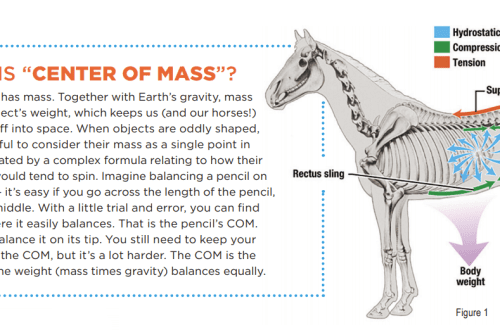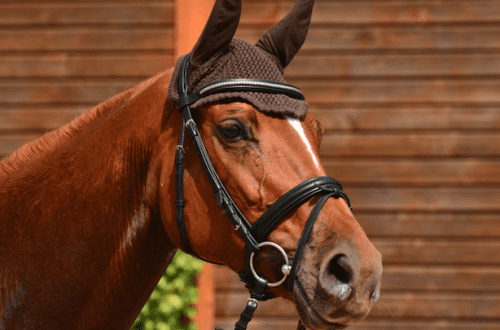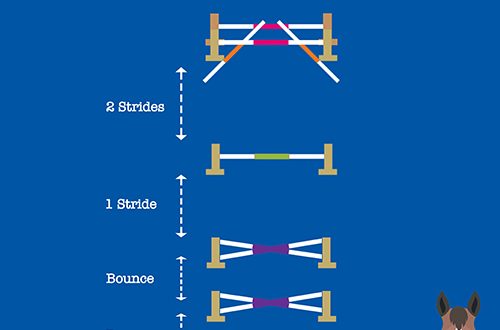
The thorny path of training a hobby horse, or why everything is more difficult than you thought
The thorny path of training a hobby horse, or why everything is more difficult than you thought
Sports horses: why they are not suitable for the “teapot”
As you know, the training of sports horses takes place mainly in two stages (simplifying, of course):
1) basic training, essentially a ride; 2) preparation for work in a particular sport.
Often, when preparing a sports horse, the handler does not think about whether the “teapot” will be able to sit on it in the future and safely ride it, for example, outside the arena.
In many cases, horses of the sports direction are forced and accustomed to a strictly defined “order”, they are not without vices in work, for example, such as poor sensitivity to the mouth and leg, “shit” under an inexperienced rider in the arena, and many others.
Such a horse is being prepared for its type of client:
1) “Sponsor”who does not plan to ride his own horse. All the sporting achievements of the horse are carried out by the “special” people assigned to it, including the bereator-athlete. Perhaps, having gained some experience in sports, the owner’s child will be able to successfully work with her, but this happens relatively rare. Most often, a horse is simply sold when it develops its potential or, inevitably, falls ill, because forced work “for a result” does not contribute to health.
2) Sportsmanwho is ready to correct problems on his own and work with a horse strictly in his direction of training, participate in competitions, etc. In general, “use for its intended purpose.”
But it often happens that such a horse ends up in fact, a “teapot” who has long wanted to buy a horse, outlined what he would like to do with her, but faced a number of problems in her behavior. Perhaps he had previously been involved in horseback riding, most often at the box office or with average athletes, coaches, perhaps he had a negative experience (falls, injuries) and, as a result, fear of a horse.
What is a hobby horse?
Often, a hobby horse is called a horse that either “did not go” in sports, or has already been spoiled by it. on health. However, such a definition is fundamentally wrong.
In Europe, this term is used to define horses of universal training, which can both calmly walk into the fields and engage in absolutely any kind of sport at an amateur level. Calm and safe in everyday life, they are prepared for the skill level of their owner.
Who needs to think about preparing a hobby class horse?
1) For adults who do not ride “from school”, are deprived of great sports ambitions, dream of a calm and safe horse for the soul, accustomed to all types of interaction with a person, which could be ridden independently, plant children , friends.
2) People who do not have experience with horses, but became owners of a horse, however, at first they are not always happy … A horse can be a horse that came from sports, “rescued”, with a number of problems both in health and in behavior. She can be aggressive, shy, with stable vices or dangerous habits (especially if the horse is from a rental). Of the health problems, most often you can encounter diseases of the musculoskeletal system, respiratory organs and gastrointestinal tract.
3) New owners of heavy trucks and their crossbreeds, young horses or even young heavy trucks. An inexperienced person will most likely not be able to raise a young horse so that it is safe. Since the horse has an amazing memory, he will quickly learn how to ignore the requests of a person, and it will be already problematic to correct him. Draft horses at any age tend to “check” a person more dangerously than saddle horses, for example by stepping on their feet. Also, “spacing” in the fields from a heavy truck is much more dangerous than from a riding horse, due to body weight and neck power, as well as lower sensitivity. Therefore, the fashion for heavy trucks as ideal hobbies because of their apparent “calmness” is becoming obsolete.
What is required from a person who prepares a hobby couple?
The main goal in this case is to “join” the desires and capabilities of a person with the needs and capabilities of a horse. This process is not as simple as it seems at first glance:
Step 1.The man needs to be helped to show the horse that he can be respected. For a horse, this means that a person can be trusted. A herbivore victim needs a clear hierarchy, without this the horse will not feel confident in the safety of his life, will put his interests above the interests of a person, not trusting him in a critical situation. This poses a significant danger to both humans and horses.
Respect with a horse is achieved only through mutual concessions, and any violence is perceived by it as a threat to life. I think many of the readers are convinced that a horse, if a person falls from it in a stressful situation (for example, a horse in a field got scared, shied away), rushes home headlong. However, if the horse trusts you and respects you, he will stay to “protect” you, to “help”. All the horses we have raised come back in such stressful situations. This is very valuable and indicates a high level of trust. The horse does not perceive a person as a predator on his back.
Step 2. Teaching the basics that many people prefer to forget. For example, respect for personal space. If a horse knows its limits, it will never deliberately step on your foot, will not hit your face with its nose, will not bite, and even more so will fight with its feet. In addition to personal space, the horse needs to be shown that there are situations in everyday life that are initially unpleasant, but necessary. Many horses don’t like to be groomed, to let their feet in the trim, to wash themselves with a hose, or to let a human enter the stall. Our task is to calmly and without violence show her that this is necessary, and that she will get used to it.
Teaching a horse everyday things through violence is extremely dangerous for both you and the horse. If, for example, you beat and scold the horse for not wanting to go to the sink or stand still while you clean it, it will perceive household procedures as something dangerous and unpleasant, and you will lose her trust for a long time …
Step 3. Horses are animals by nature. conservative,they are suspicious of anything new and unfamiliar that has a direct and direct bearing on “work”. Let’s say that the horse before you worked in dressage on the parade ground / in the arena, but never went out into the fields. If you are not an experienced rider, and the horse is not at all familiar with the new activity, it could end in injuryfor both you and the horse. You need to prepare a horse with your existing ideas very calmly and gradually, so as not to cause negative emotions in her. This rule applies not only to new “places” of work, but also to new types of work. A horse used to a certain type of work will find it difficult to adapt to something radically new. From dressage in one day, it will not work to “jump” into jumping or western without causing a negative in the horse. It will require gradual and smooth preparation, as well as taking into account the preferences and inclinations of the horse in work.
Step 4. Inconsistency from an inexperienced person in preparing a horse “for himself” can end very sadly for both. So, it’s hard for me to forget a depressing example – the mare was in inconsistent training, which was done by grooms – representatives of various equestrian disciplines. As a result, even experienced riders could not sit on a mare without a bunch of “ropes” and spurs with a whip, what can we say about her mistress, a “teapot” … Nobody from the stable could fix such serious defects in the training, after which the mare was sold, then sold again, but in the end she ended up in a herd in the Ryazan region. And this despite the fact that the mare was initially very calm, friendly and set to cooperate with a person.
Thus, when taking responsibility for a horse, choose very carefully the training and direction of training for it, as well as all people working with the animal, because each of them contributes to the behavior of your horse.
When choosing a trainer, remember that he will have to help you form a clear sequence of interaction with the horse, teach you and its necessary “base” and prepare you for a good time together. After all, as I wrote earlier, without understanding and consistency, you will not get a safe hobbyist who is ready to cooperate with a person with interest.
Sofia Bryantseva, horse owner, method co-author PERFECT HOBBY-HORSE.
- konyushnya2012 July 20 2018 city
Hello. Where did you get this nonsense? “Sporting horses in many cases are forced and accustomed to a strictly defined “order”, they are not without vices in work, for example, such as poor sensitivity to the mouth and leg, “shit” under an inexperienced rider in the arena, and many others. “??? A sports horse is a precise “tool”, sensitive and attentive to its rider. It’s also interesting (already at the same time) about the mare that left for the Ryazan region … If I think correctly what kind of horse we are talking about, then it was in your stable that the mistress of the “teapot” was bred on NXu, and then they didn’t cope and shook off the good out of sight hobby. Correct me if I’m wrong … At the same time, she did not go before “wrapped with ropes in whips and spurs.” Answer
- severber July 28 2018 city
Hello! About a really good sport horse, you are absolutely right. However, unfortunately, in Russian realities, horses of a sports direction and training are most often called something like “ran through Hannover” prepared by stable girls in “big sport”. In the context of this article, it is considered that an athlete and a sports horse have the same goals and priorities, while a hobbyist who goes to the fields once a week has completely different goals. And, again, unfortunately, people are accustomed to turning a blind eye to the everyday behavior of sports horses in most stables, even of a high level (from my own experience, I just haven’t seen it, from broken legs and arms to a scalp). But, despite the behavior, under an experienced and skilled rider, such a horse shows an excellent result in sports. Does an ordinary hobbyist need such “good luck”? Again, there are different cases, but me and my friends often come across this. This is about an Anglo-Latvian mare, bought by a caddy from a sport, which was prepared in a “hobby” by several people at once with different methods and from different sports. Answer
- konyushnya2012 July 29 2018 city
Thanks for the reply. The horse is not And how long did they “cook” that horse? Answer
- severber July 30 2018 city
About two years. It was a triathlon brace, then riders of different levels, then show jumpers, then someone else. There were more and more ropes of various functions on the mare, but still everyone “flyed” from it. The mistress of the nulevik was completely, except that she could walk along the parade ground in an elderly heavy truck. So I sold “joy”. Answer





